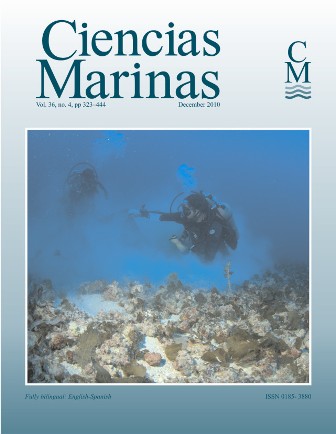Seaweed diversity associated with a Brazilian tropical rhodolith bed
Main Article Content
Abstract
This study describes the predominantly tropical, subtidal seaweed populations growing on rhodoliths between 4 and 18 m depth in the southern part of Espírito Santo State (Brazil). Qualitative and quantitative sampling revealed species-rich algal communities, comprising 167 species. Three species of rhodophytes represent new records for the Brazilian marine flora (Lithothamnion muelleri, Scinaia aborealis, and Mesophyllum engelhartii). Marked seasonal differences in fleshy algal species composition and abundance were related to seasonal instabilities caused by winter-storm disturbance over the rhodolith beds. In relation to depth, rhodolith density appears to be an important factor for the variation in the abundance of fleshy algae. The rhodolith community is composed of at least seven nongeniculate crustose coralline algal species. Rhodolith beds in southern Espírito Santo State, in an area of 150 km2, provide an important habitat for epibenthic communities, supporting 25% of the known macroalgal species richness along the Brazilian coast.
Downloads
Article Details
This is an open access article distributed under a Creative Commons Attribution 4.0 License, which allows you to share and adapt the work, as long as you give appropriate credit to the original author(s) and the source, provide a link to the Creative Commons license, and indicate if changes were made. Figures, tables and other elements in the article are included in the article’s CC BY 4.0 license, unless otherwise indicated. The journal title is protected by copyrights and not subject to this license. Full license deed can be viewed here.

